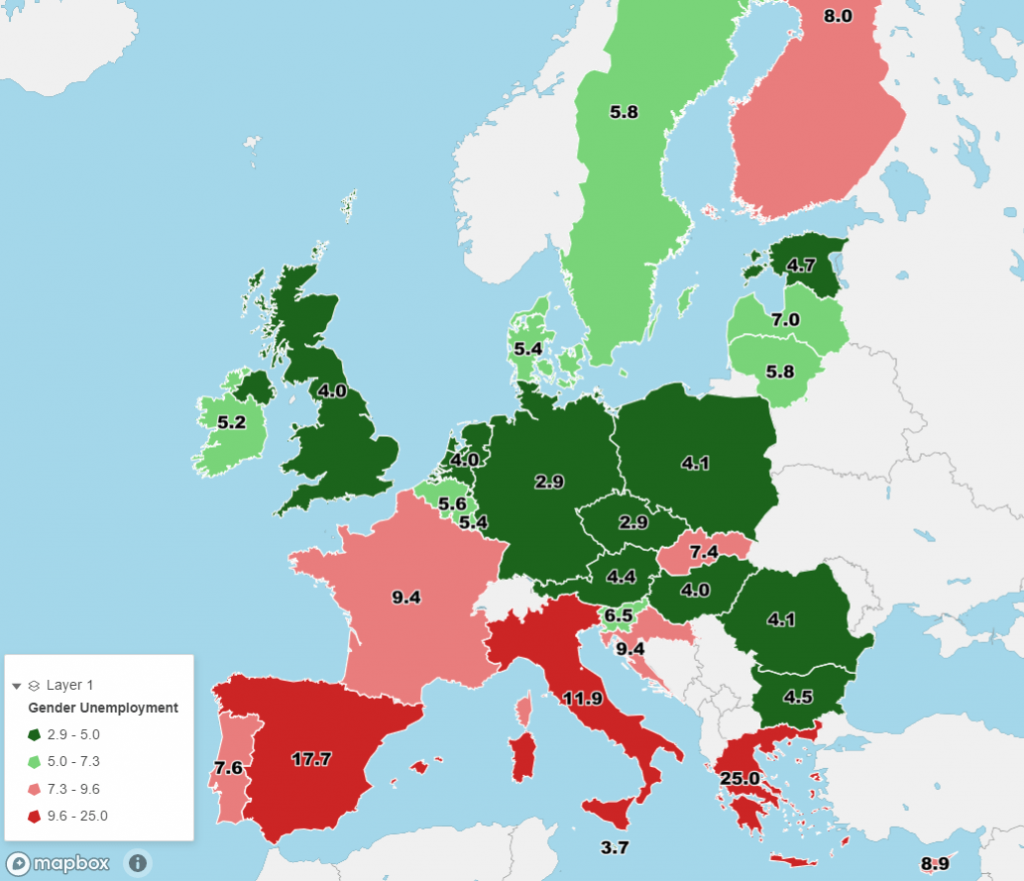
Unemployment in Europe is already suffering declines in its economy , and with the financial and economic crisis of 2008 and the occurrence of the pandemic in the year of 2019, reached the policies of social spheres, of employment and the world economy, the rise in unemployment rates across Europe has been triggered, but only one country, The Spain, found himself in the position where his unemployment rate was above 10%, in 2012 this number rose to 12 countries that are still above that percentage. from that, the European Union has always aimed to ensure that 75% of people aged between 20 e 64 years had a job until 2020.
Between the years of 2014 a 2019, the unemployment rate in europe, reached a drop of 11,9% for 7,6%. in the last year, 2020, a rate of 7,8% was introduced, being the biggest since 2008 – 7,4%.Like this, efforts such as helping young people to enter the labor market, combating long-term unemployment and facilitating the mobility of workers in the European Union were adopted..
Yet, with the outbreak of the pandemic, Europe was not left out of the global economic crisis, from that, the generation of young people in european countries faces risks in relation to unemployment. Europe recorded an unemployment rate of 17,6% in August 2020 for young people (of 25 years down), which in January was from 14,7%. Young people are the ones who are suffering the most from this lack of job offers due to the lack of demand for services in sectors such as travel, retail and hospitality. Even college-educated teenagers face competition that previously did not exist for entry-level positions given the high number of newly fired workers. This makes us think about the impact points that this came to reflect on the GDP of European countries, in Spain, for example, there was a sharp decline in it, showing that in 2018 e 2019, the annual GDP was 1,204,241M. € and 1,244,772M. €, respectively, e no ano de 2020 its fall to 1,121,698M.€.
Based on European institutions, highly service-dependent economies will be harder to recover given each wave of COVID-19 contagion. In order to preserve the economy, working hours were reduced. Therefore, job losses did not occur uniformly across countries on the continent., at the end of the year of 2020, for example, Spain suffered its economic collapse by posting the worst performance in Europe, consequently being the country that will take the longest to recover the GDP, according to the latest European Commission projections, as it had a very high unemployment rate, 14,8%, and is identified by Brussels as the country that will need the most time to recover. On the other hand, Germany kept its unemployment rate at 3.5%.
Given the data presented, Europe contained unemployment during the worst economic crisis it has faced since 1930. This containment came from the actions taken on the reduction of working hours ensured that companies in difficulties kept their employees, reducing your working hours and consequently, cushioning the initial impact of the crisis. Yet, the government subsidizes the other half of the employee's salary. An example, it is the German government that covers between 60% e 70% of wages for hours not worked.
Yet, the pandemic contributed to the growth of unemployment rates across Europe and, consequently, compromised the continent's economy, that in 2020 registered a contraction of 6,1% and the EU e 6,6% in the euro area. This increase in the unemployment rate in the Eurozone is even greater than when the world financial crisis occurred in 2008, when rates reached 7,5% and later, at its worst moment, she even hit 12,1% from the second half of 2013. Even if, in front of an overview, companies and consumers have managed to adapt to face the containment measures, sectors such as tourism and services, continue to be affected, because even in 2019 the unemployment rate in the Eurozone was between 7,6% a 6,4%, in the month of April. Economic forecasts show that European countries will return to their pre-crisis levels, but each one in its moment. Until now it is predicted that in 2021 an increase in the economy of 4,2% and of 4,4% for 2022
Yet, with the increase in vaccinations, restrictions will be progressively removed, gradually causing the increase in demand for jobs and movement in the labor market, which in turn will be fostered by the resumption of tourism and services. Forecasts for 2021 are that the unemployment rate in the EU reaches 7,6% is at 2022, 7%. Already in the euro area, the rate should reach in the years of 2021 e 2022, 8,4% e 7,8% successively. The rates presented will continue to be higher than those registered before the crisis, but with predictions of improvements over the years reflecting on the economy.
By Luiza Abate and Gabriel Arcanjo
References:
ALDERMAN, Liz and ABDUL, Geneva. Young and unemployed in Europe. Exam, 13 nov. 2020. Available in: https://exame.com/mundo/jovens-e-desempregados-na-europa/ Access in: 10 jun. 2021.
FUR, Lluís, FARIZA, Ignacio and DE MIGUEL, Rafa. The two extremes of Europe in the crisis. The country, 21 nov. 2020. Available in: https://brasil.elpais.com/internacional/2020-11-21/os-dois-extremos-da-europa-na-crise-do-coronavirus.html day access 10 jun. 2021.
EUROPE: more of 1,8 millions of long-term unemployed. Euler Hermes, 25 Feb. 2021. Available in: https://www.eulerhermes.com/pt_BR/publicacoes-economicas/noticias/europa-mais-1-8-milhao-de-desempregados-no-longo-prazo.html day access: 10 jun. 2021.
Unemployment rate – 2014 – 2019. European Council, 25 nov. 2020. Available in: https://www.consilium.europa.eu/pt/infographics/unemployment-rate-2014-2019/ day access: 10 jun. 2021;
MONTEIRO, Ana Catarina. Unemployment rate in Europe hits historic lows. Hispersuper, 3 mar. 2020. Available in: https://www.hipersuper.pt/2020/03/03/taxa-desemprego-na-europa-atinge-minimos-historicos/ day access: 10 jun. 2021.
